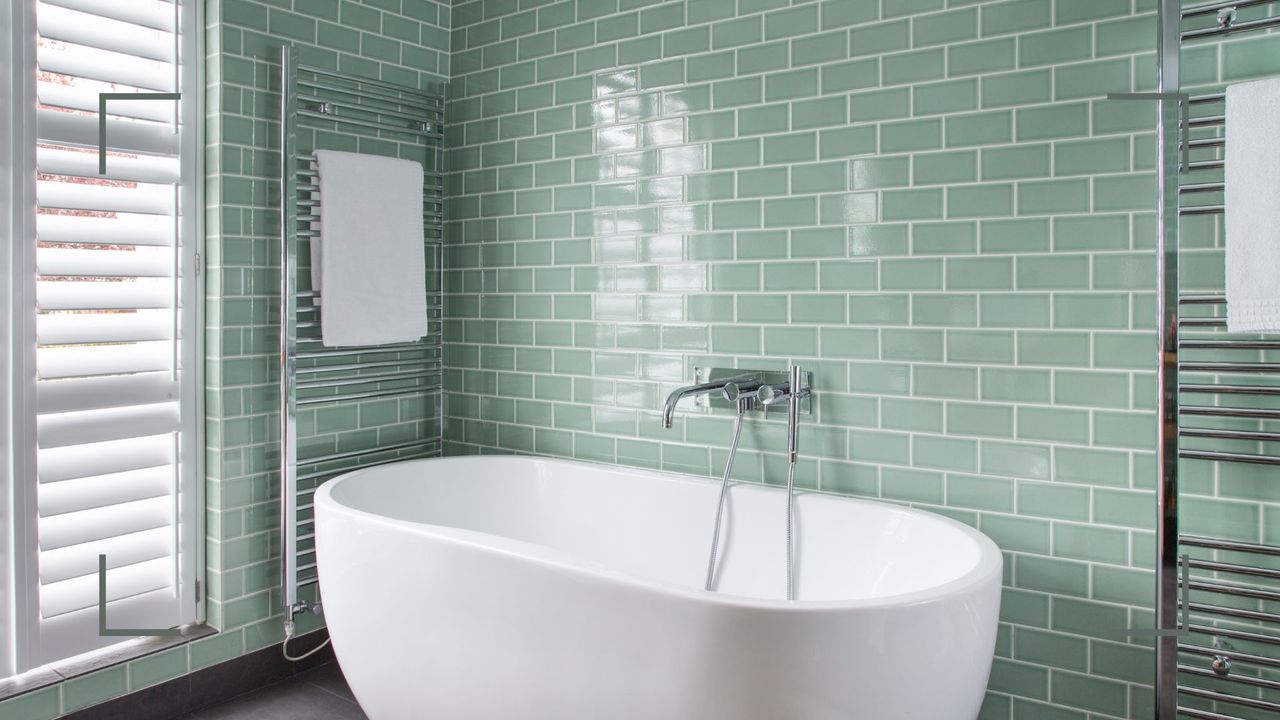
In the depths of winter, when our bathroom is akin to a refrigerator, I don't know where we'd be without our heated towel rail keeping things warm and toasty.
It acts as the primary source of heat in the room, meaning that when you step out of the shower, teeth chattering, you can wrap up in a warm, fluffy towel to take the edge off. That said, the particular towel warmer I chose is far from perfect – very far indeed, in fact.
If, like me, you are considering buying a heated towel warmer for your bathroom, I want to share with you the six things that I wish someone had pointed out to me before we chose ours.
What I wish I'd known before buying a towel rail
Heated towel warmers are a fantastic addition to any bathroom, but there are certain features to be aware of before you buy — and as a serial renovator, I'm here to reveal them...
1. Choosing dual fuel is best for warmth all year round
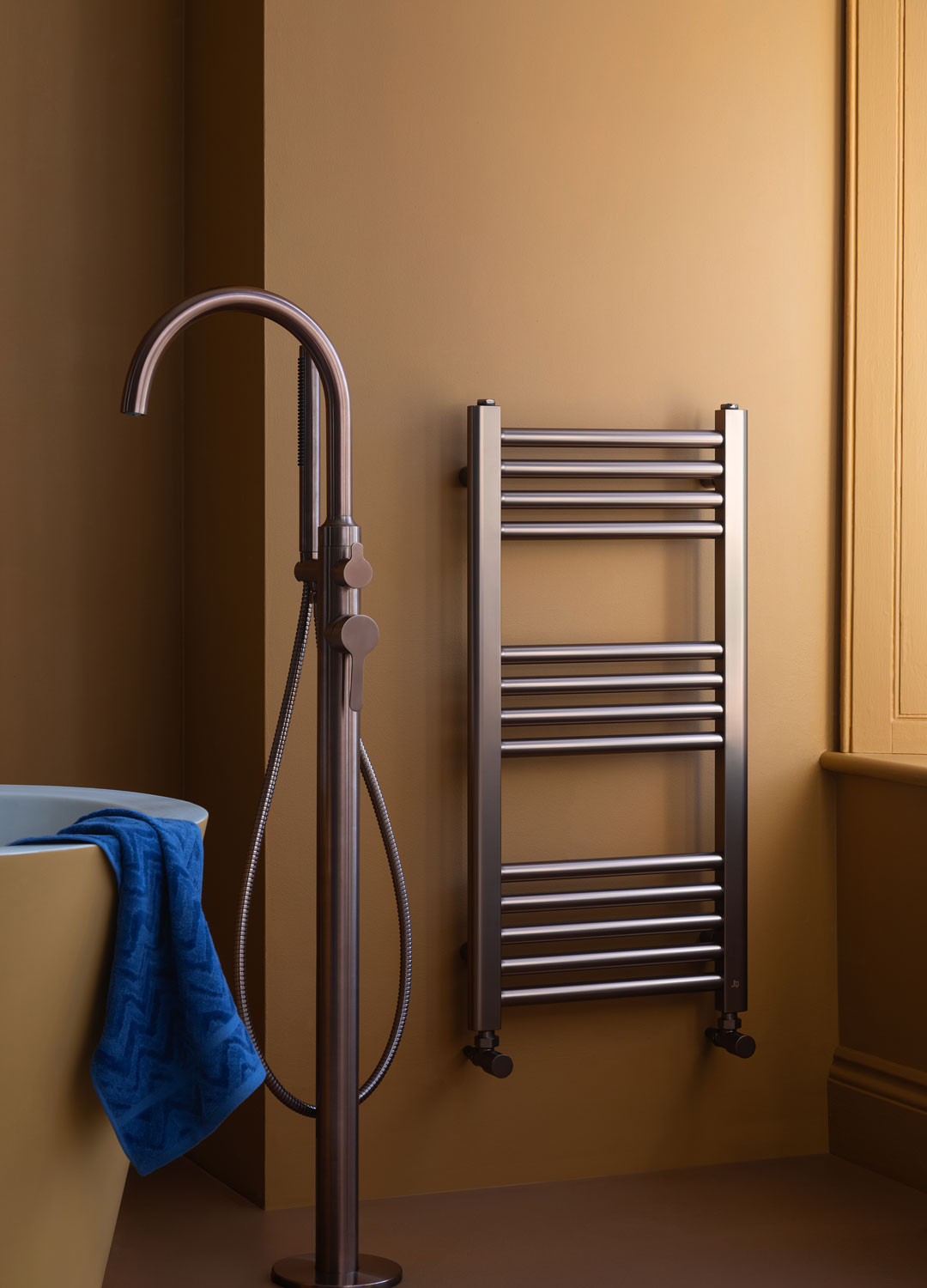
My biggest bugbear regarding the heated towel rail is that it is plumbed into our central heating system. This means that it is only warm when the heating is on. So, while we have warm, dry towels during the cooler months, come spring, we are left with damp, cold ones. We should have opted for a dual-fuel model instead.
"These allow homeowners to run the rail on central heating during the colder months and switch to electric in summer, so you can enjoy warm, dry towels all year round without heating the whole system," explains Jeevan Seth, CEO at JTP.
Choosing a dual-fuel model would also have come in handy when it comes to drying wet laundry indoors on a rainy summer day.
2. You need to think about usage as well as heat output
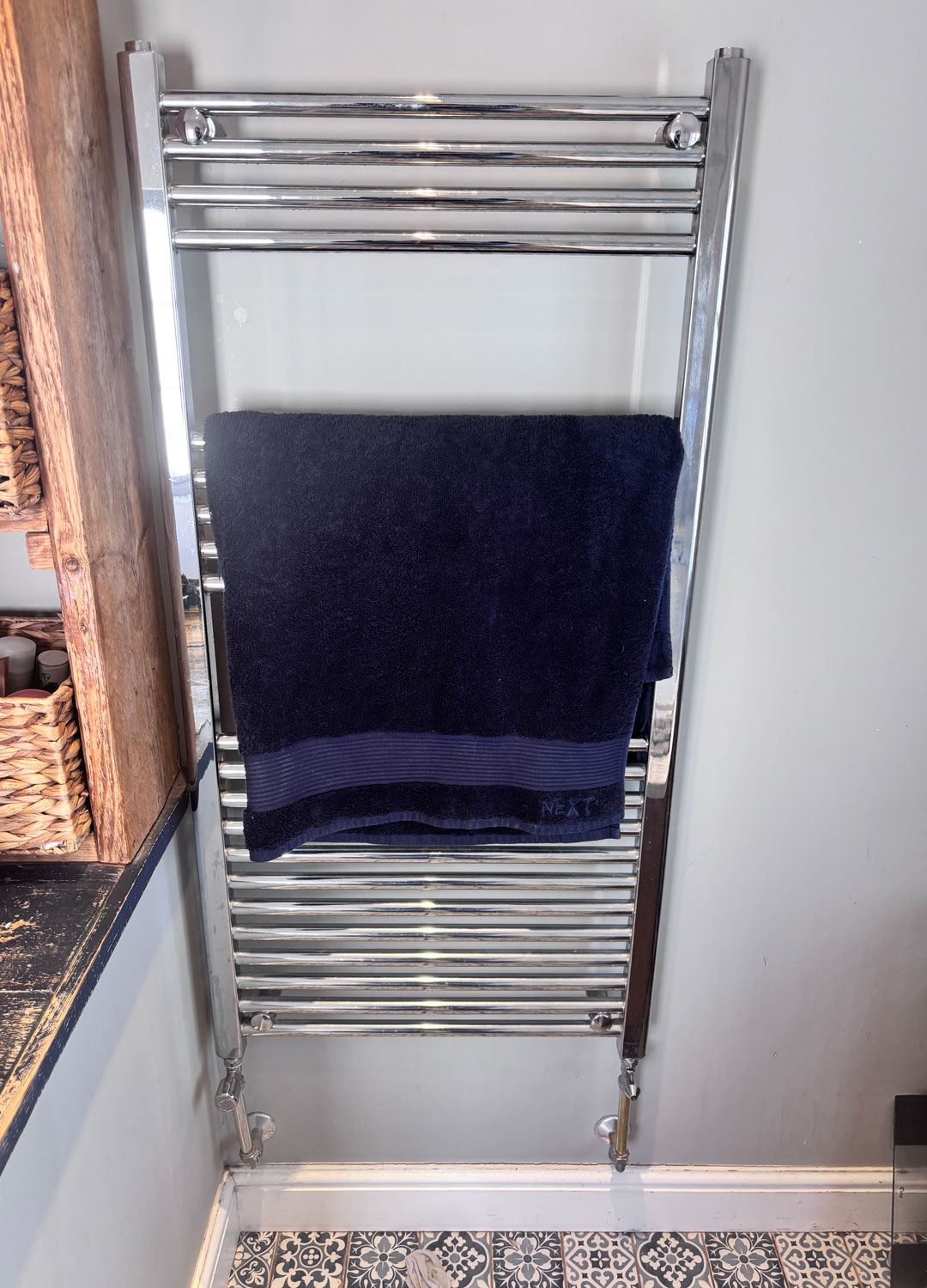
The next time I buy a heated towel rail, it will be much bigger than the model I have now. This isn't really so much about heat output, but more due to the fact that this is a family bathroom, and there just isn't enough space on the rail for the number of towels we use.
Additionally, once the warmer is covered with damp towels, it is really hard for it to actually emit any heat into the room. Either a bigger rail or an additional heat source would have made so much sense.
"Every bathroom is different and a towel rail that’s too small simply won’t warm the room or your towels properly," explains Nick Duggan, director of The Radiator Centre. "If your bathroom is particularly large, you may wish to consider an additional radiator as well.
"Using a simple heat calculator takes into account the size of your bathroom, ceiling height and even the number of windows, giving you a clear guide on the ideal output in watts," continues Nick. "It’s a small step that saves guesswork and ensures your rail is perfectly matched to your space, so whether it’s a chilly winter morning or a summer shower, you’ll always step out to perfectly warm, fluffy towels."
3. Chrome might not be the best option
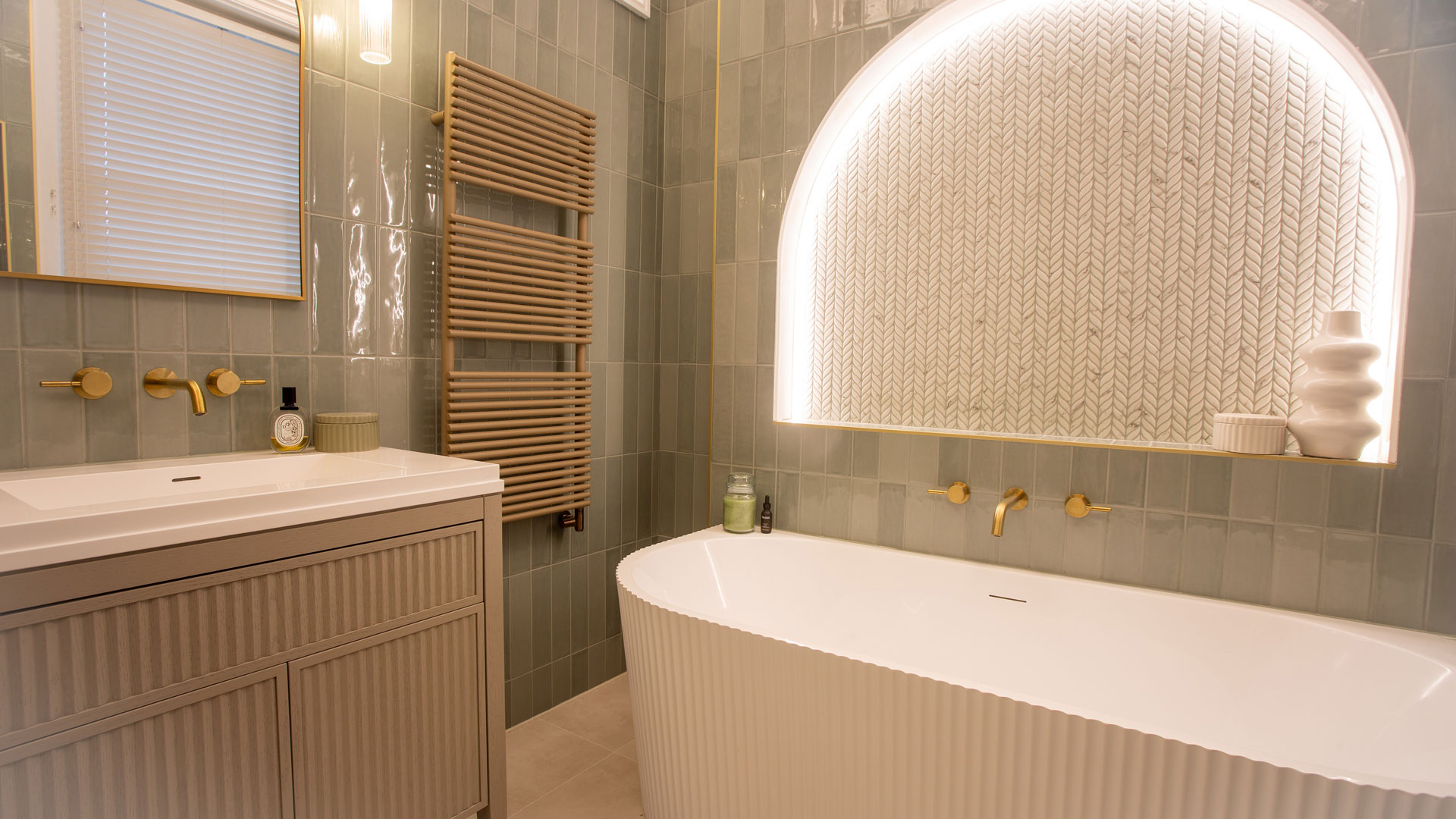
I have to be honest here, shamefully, I didn't give too much thought to the look or finish of my towel warmer. I just kind of chose Chrome because I was in a hurry to get the bathroom finished, and that's what most of the models I was looking at seemed to come in.
It's not that the chrome has dated terribly, but if I were to choose one now, I would definitely go for something a little different that could add something more in the style stakes or that could have helped make the bathroom look more expensive. Perhaps a matte colour, or a brushed brass for a little more warmth. Turns out, this could have some practical benefits too.
"We would always advise customers to avoid chrome radiators, as they do not emit heat as efficiently as coloured or matt finishes,' reveals Nick Duggan. "In fact, chrome-plated radiators can give out up to 20% less heat than painted options."
RRP: £49 | Wall mounted ladder heated towel rail in Black, measuring 40cm by x100cm.
4. Location is a big factor on what you choose
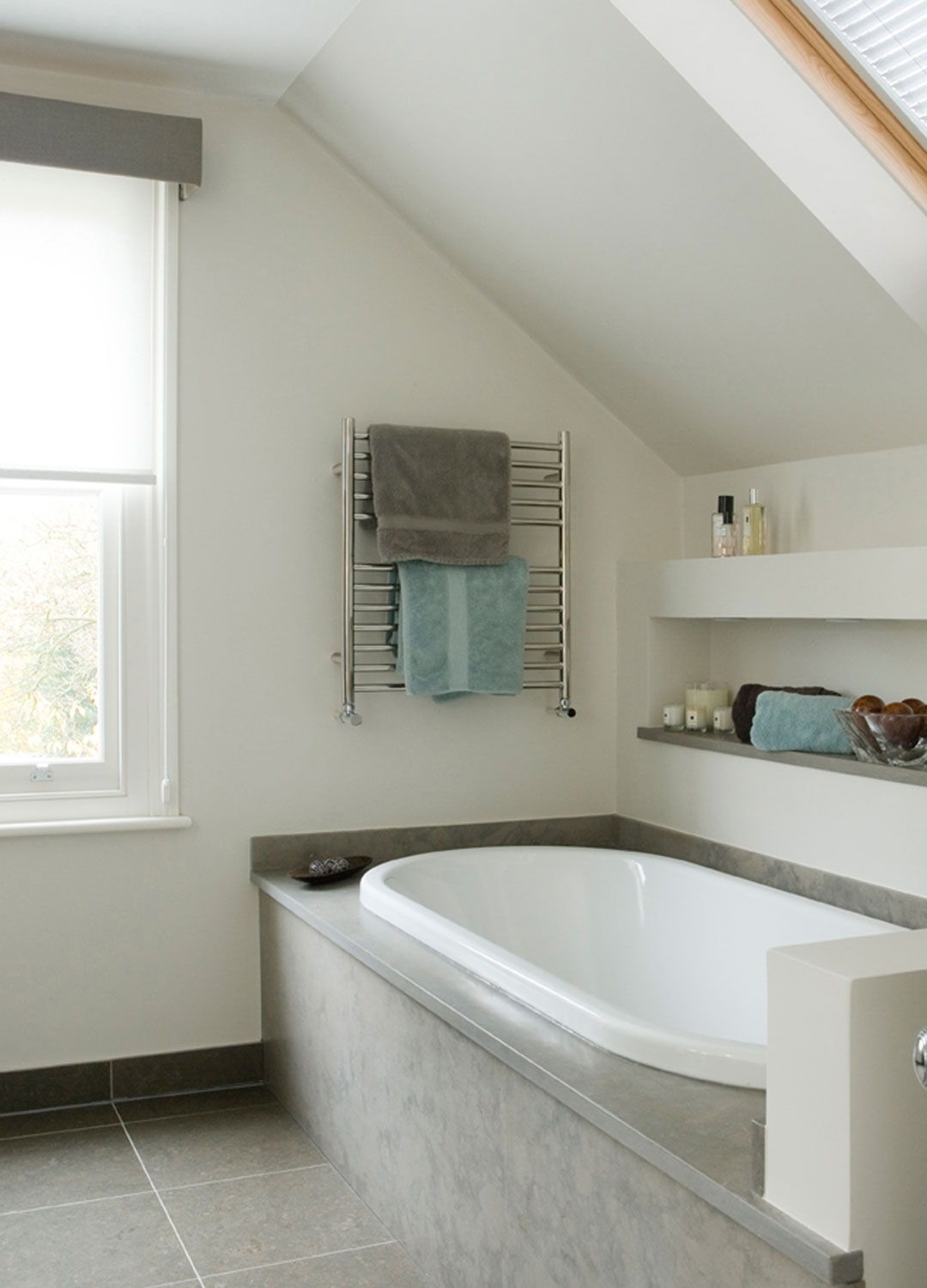
Locate the heated towel rail where you can reach it from the shower. Our bathroom certainly isn't huge, but had I followed the bathroom design rules for locating a towel warmer, then we wouldn't need to step out of the bath or shower in order to reach it. With teenagers in the house, this means lots of puddles. Even more annoying, there is a wasted space at the end of the bath that would have been the perfect spot.
"Ideally, position your rail somewhere easily accessible from the shower or bath, without crowding the room or blocking other fixtures," advises Nick Duggan. "Wall space near the bath or beside the shower often works best."
"Fitting the rail on an internal wall, away from draughts, helps maximise efficiency," adds Jeevan Seth.
5. There are many different style options to consider
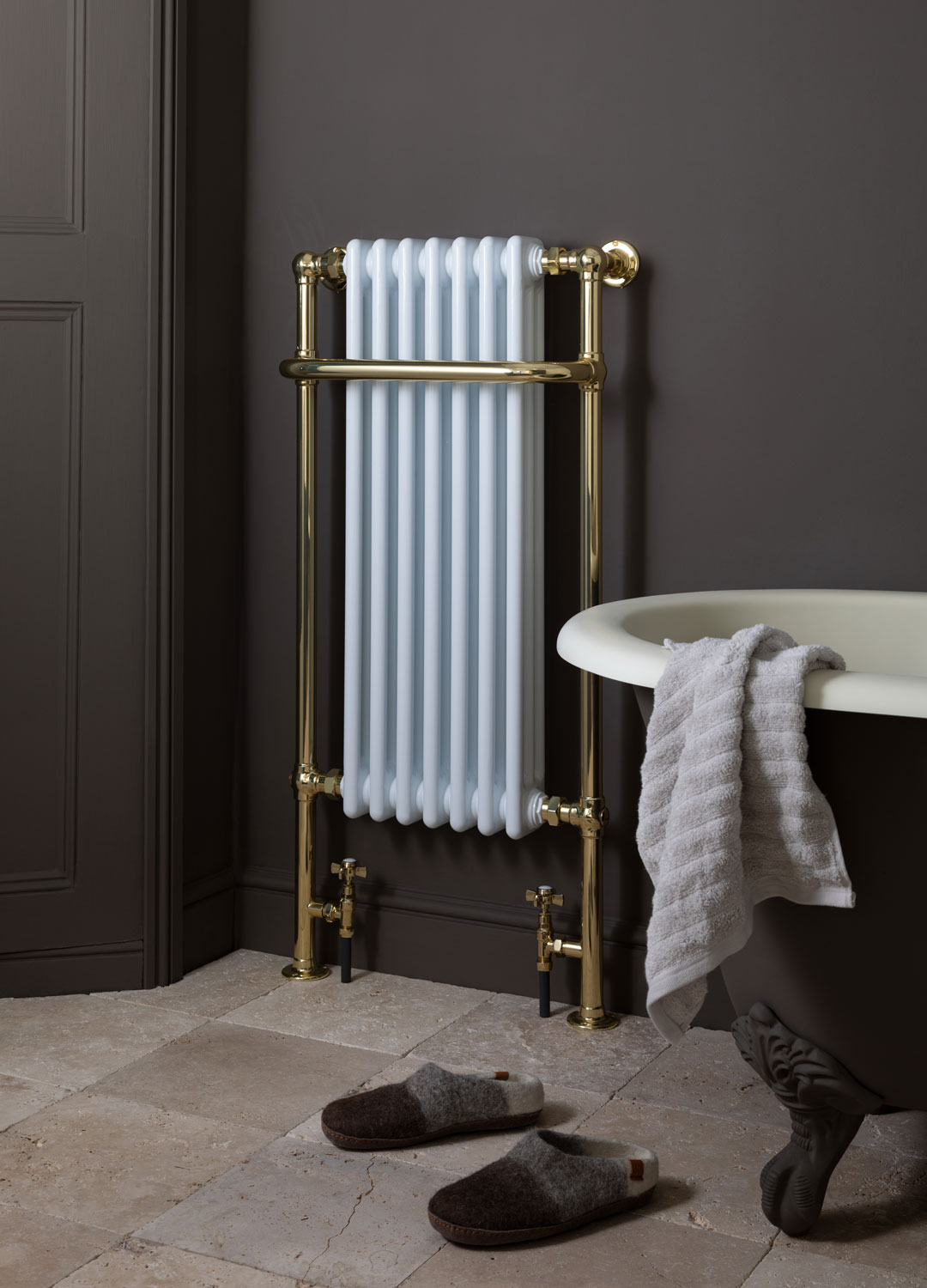
Research the different style options before you buy. The style of the towel warmer was another rushed decision within the renovation of our house. On reflection, there are so many other styles and bathroom trends that could have worked better than the 'classic' rectangular ladder we chose.
"While traditional, vertical towel rails are still a popular choice, there are an increasing number of stylish options becoming available," points out Nick Duggan. "Long, low designs are a great solution for anyone with a smaller bathroom as they can fit in areas which would otherwise be dead space, such as above the bath."
According to Nick, some models could even have helped overcome the issue I have with the towels blocking the heat.
"The bigger the bars, the better the heat output," explains Nick. "Designs which separate the towel from the radiator section are also great options, as these heat the room more effectively."
6. Cleaning considerations
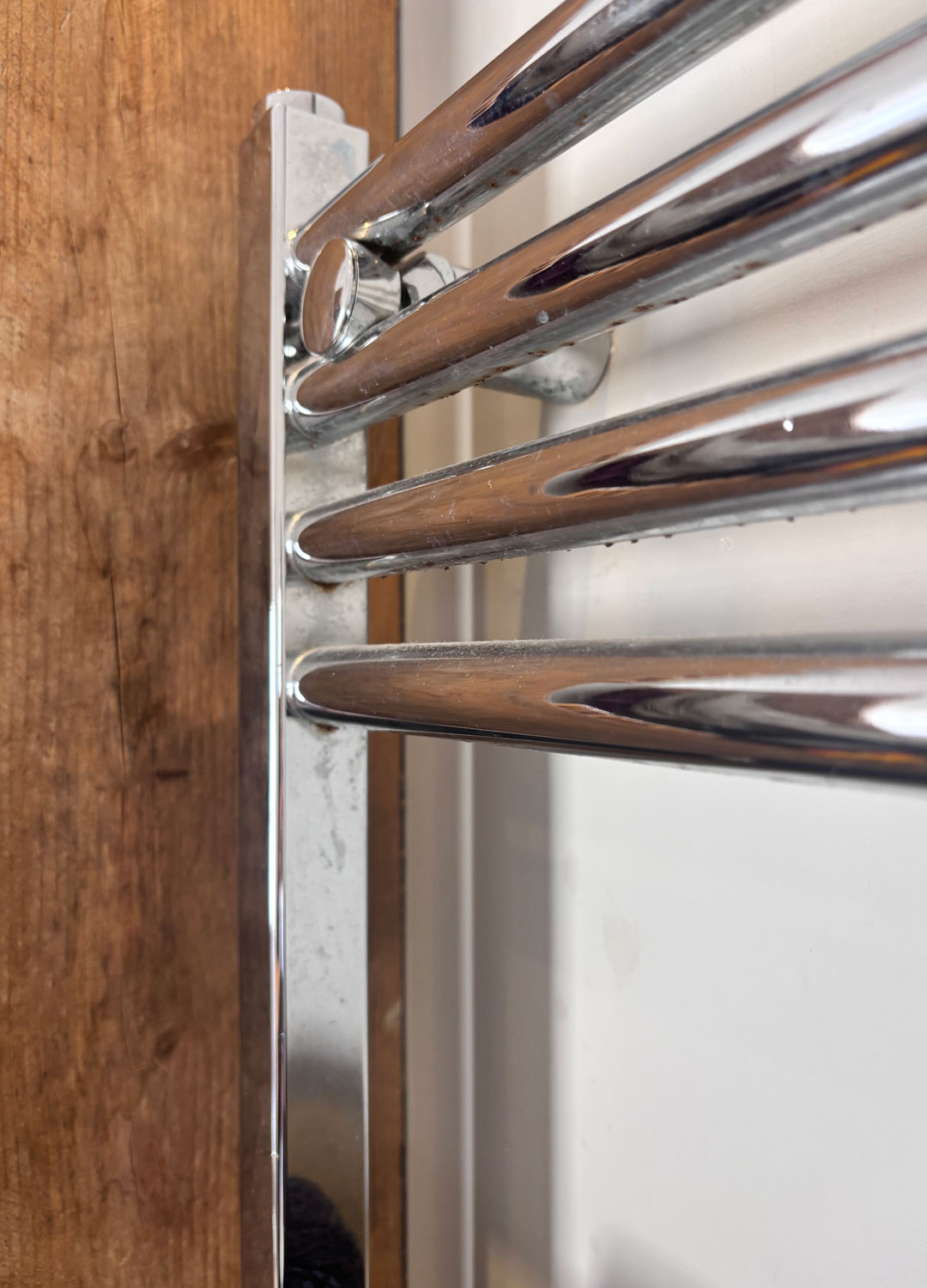
My chrome towel warmer doesn't get cleaned as often as it should, meaning it tends to gather dust between the bars. Being of a polished finish, it shows up all kinds of smears and marks. It is only recently, when researching how to clean a bathroom properly, that I learned some really nifty cleaning techniques.
It turns out that a solution of white vinegar and warm water (in equal parts) works wonders – particularly when paired with a soft microfibre cloth for a final wipe over.
And, if you want to cut down on the time it takes to dust, try using a multi-pronged Venetian window blind cleaner – it'll have your towel warmer gleaming in no time at all.
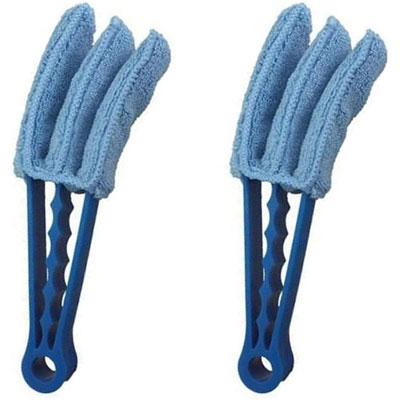
RRP: £8.99 | These tri-pronged dusters might be designed for cleaning shutters and Venetian blinds, but they also work wonders on towel warmers.
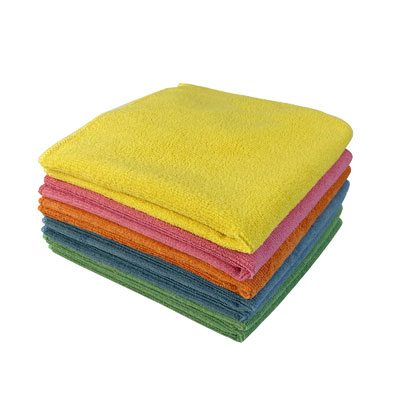
RRP: £4.00 | In a range of cheery colours, this five-pack of microfibre cloths will trap dust and wipe away smears, leaving a streak-free finish.
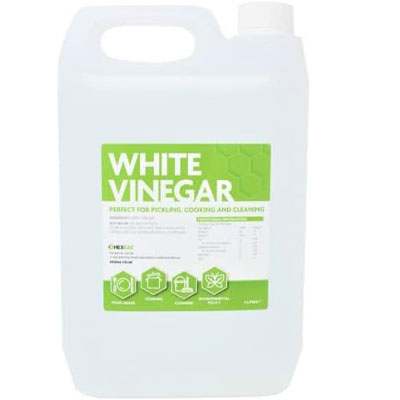
RRP: £5.95 | White vinegar can be used for so many household cleaning jobs, including making heated towel warmers sparkle. This bottle will last a good while.
FAQs
Can a heated towel rail heat a bathroom?
This very much depends on the size of your bathroom and the heat output of your chosen towel warmer.
In small bathrooms and en-suites, or those that are particularly well insulated, a heated towel rail may well be all you need. However, in larger bathrooms or those that tend to feel cold, it is well worth considering supplementing a heated towel rail with a radiator or underfloor heating.
It wasn't just the choice of towel warmer that I messed up – there were other bathroom renovation mistakes I made that it really would pay to read up on if you want your own project to run smoothly.







